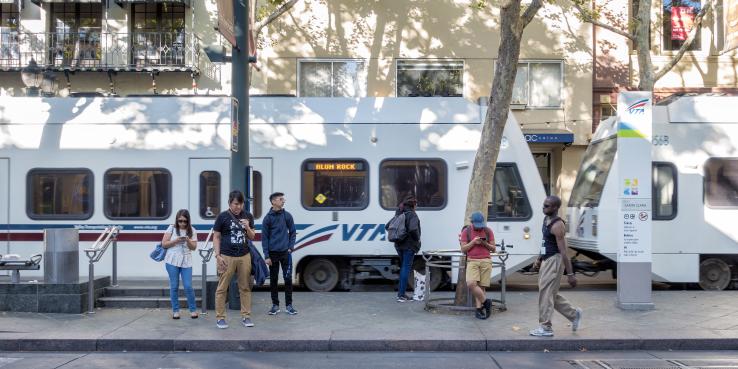This year SPUR pitched in on an annual tradition in San José: surveying residents about their perceptions of the city on a number of metrics. In partnership with San José State University and with funding from the Knight Foundation, we put forth a series of questions to city residents and SJSU students, faculty and staff. With unprecedented changes affecting the city over the past few years, including those forced upon us by the pandemic, the survey presented a great opportunity to gauge how people were feeling about the present and future of their city and university. What we found was troubling. The survey results showed that San José residents are less satisfied with their city compared to residents of other cities across the country. Results like this are a reminder of why SPUR exists, and why our work to advance solutions for a better San José — including affordable housing, high-quality transit and improved access to economic opportunities for all residents — are so important.
The results of the San José residents’ survey revealed they feel uneasy about their city.
The survey also revealed a distrust of government, even at the local level.
At first glance, one might think that San José residents are worried about what the post-pandemic world holds for them, but this does not appear to be the key driver of their responses. The results of the 2022 survey are consistent with surveys conducted by the city from 2016 to 2020. The findings from those surveys indicate that residents have had a generally negative view of their city for several years now. Residents who feel the “overall quality of life” in San José is “good or excellent” has hovered between 42% and 44% since 2016, clearly showing that negative feelings about San José predate the pandemic.
One of the most significant areas of concern is safety, especially downtown. While most university and citywide respondents valued the importance of safety and rated it “Essential,” the majority in both groups (76% of university respondents and 66% of citywide respondents) rated the actual feeling of overall safety in the city fair or poor. The university survey was consistent with citywide residents' concern about feeling unsafe downtown during the day and after dark; with
While the university community expressed a slightly higher satisfaction rate than the citywide respondents with the overall quality of the San José transportation system, ease of public parking was highlighted in the 2022 survey as the biggest transportation concern, with over 80% rating it fair or poor — a slight improvement from the 90% dissatisfaction rate in 2019. Additionally, the university community shared citywide residents’ low confidence in the completion of the BART extension and the high-speed rail to downtown in the next 10 years.
While the university community and citywide residents are generally satisfied with the job the San José community is doing in attracting and valuing people from diverse backgrounds, all residents are concerned about the lack of care for vulnerable residents, including
We had a significantly lower response rate to the SJSU version of the survey this year compared to the previous two years. Over 600 university members with an age distribution between 18 and 74 responded. Among the respondents, 5% identify as Black, 26% Asian and 55% White. Over three-quarters of the university respondents live in San José, close to half live in single-family homes and 54% have been in the city for more than 11 years.
The primary question both survey results (and those since 2016) raise is: Why? Why do residents of San José feel so badly about their city? When comparing the results to where San José actually sits relative to other cities in terms of education, unemployment, crime, poverty and other quality of life metrics, it shouldn't do as poorly as it did. It’s clear that more in-depth investigation is needed as to why San José residents are so down on their city. Similarly, the university findings beg the need for deeper research, perhaps using focus groups, to understand the root cause for the challenging feedback and address it effectively.
